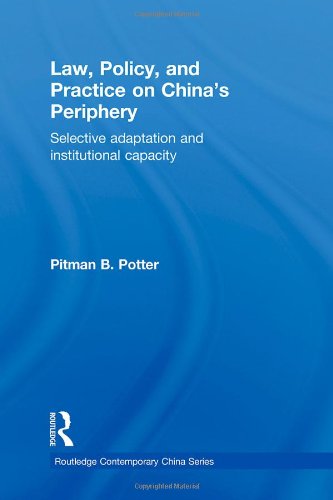

Most ebook files are in PDF format, so you can easily read them using various software such as Foxit Reader or directly on the Google Chrome browser.
Some ebook files are released by publishers in other formats such as .awz, .mobi, .epub, .fb2, etc. You may need to install specific software to read these formats on mobile/PC, such as Calibre.
Please read the tutorial at this link. https://ebooknice.com/page/post?id=faq
We offer FREE conversion to the popular formats you request; however, this may take some time. Therefore, right after payment, please email us, and we will try to provide the service as quickly as possible.
For some exceptional file formats or broken links (if any), please refrain from opening any disputes. Instead, email us first, and we will try to assist within a maximum of 6 hours.
EbookNice Team

Status:
Available0.0
0 reviewsThis book examines the Chinese government’s policies and practices for relations with the Inner Periphery areas of Tibet, Xinjiang, and Inner Mongolia, and the Outer Periphery areas of Hong Kong and Taiwan focusing on themes of political authority, socio-cultural relations, and economic development. China’s history may be seen as one of managing the geographic periphery surrounding China proper. Successive imperial, republican, and communist governments have struggled to maintain sovereignty over the regions surrounding the great river valleys of China.
The importance of the periphery is no less real today, concerns over national security, access to natural resources, and long-held concerns about relations between Han and other ethnic groups continue to dominate Chinese law, policy and practice regarding governance in the Inner Periphery regions of Inner Mongolia, Xinjiang, and Tibet. In the Outer Periphery, Beijing sees engagement with the outside world (particularly the West) as inextricably tied to Chinese sovereignty over former foreign colonies of Hong Kong and Taiwan.
Using the case study of national integration to indicate how policies are articulated and implemented through law and political-legal institutions, this book will be of interest to students and scholars of the peripheral regions. It will also appeal to academic and policy communities interested in legal reform in China